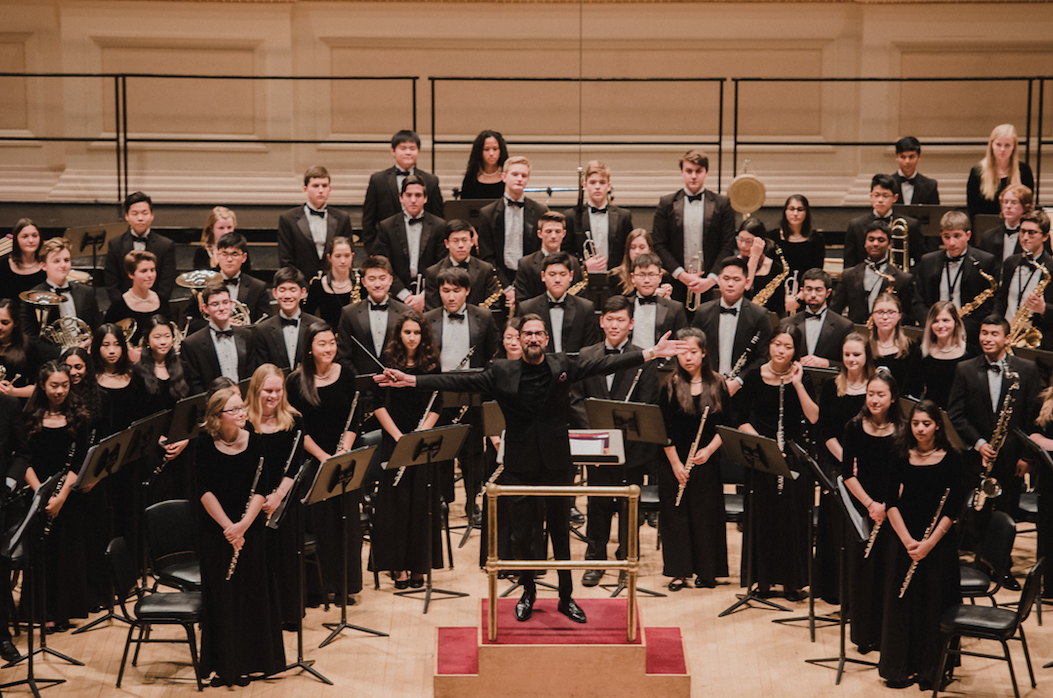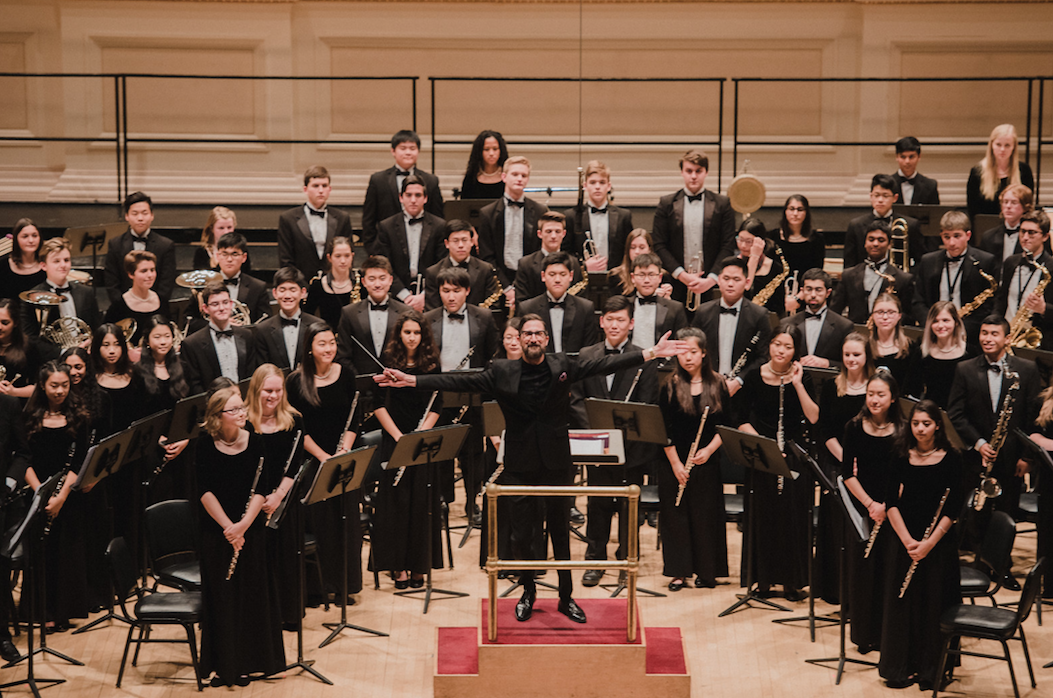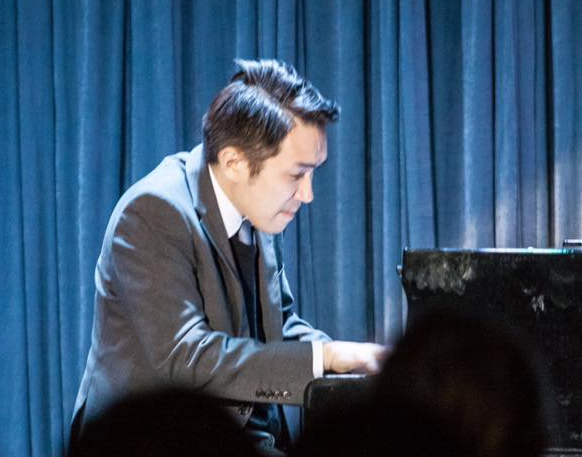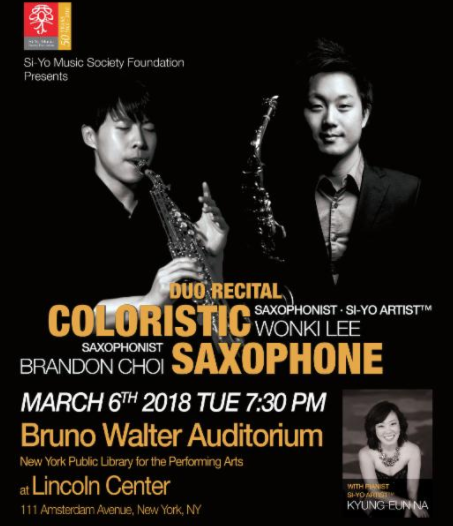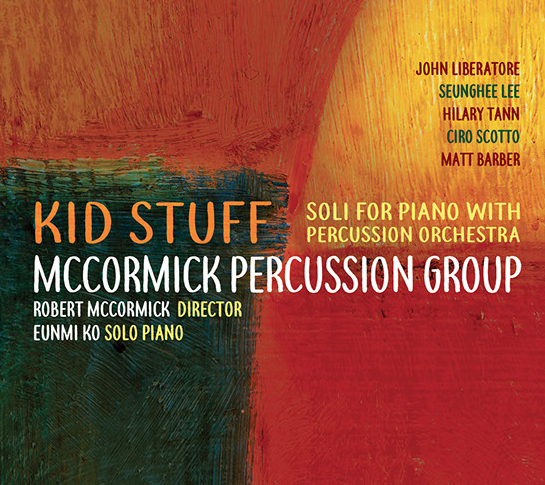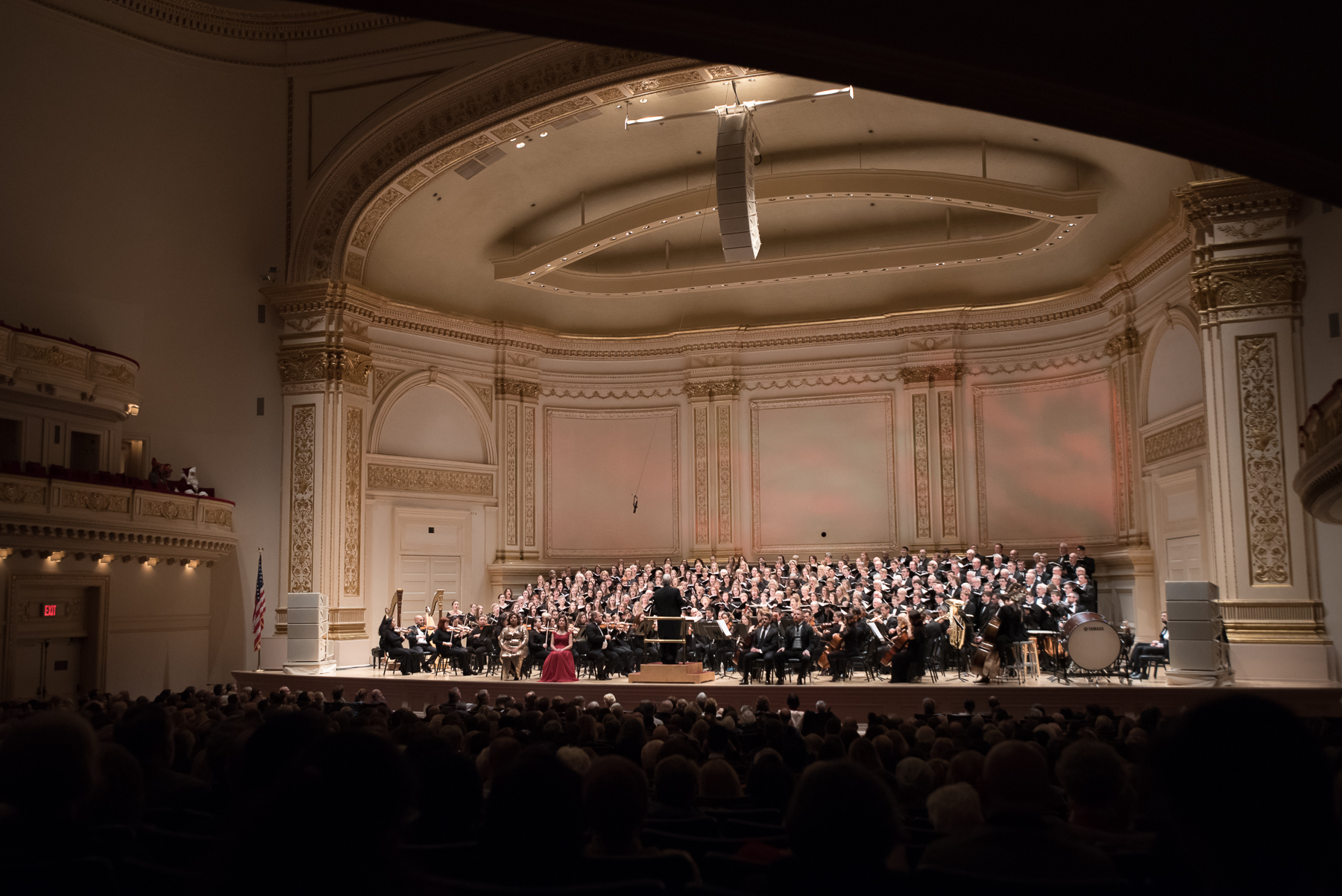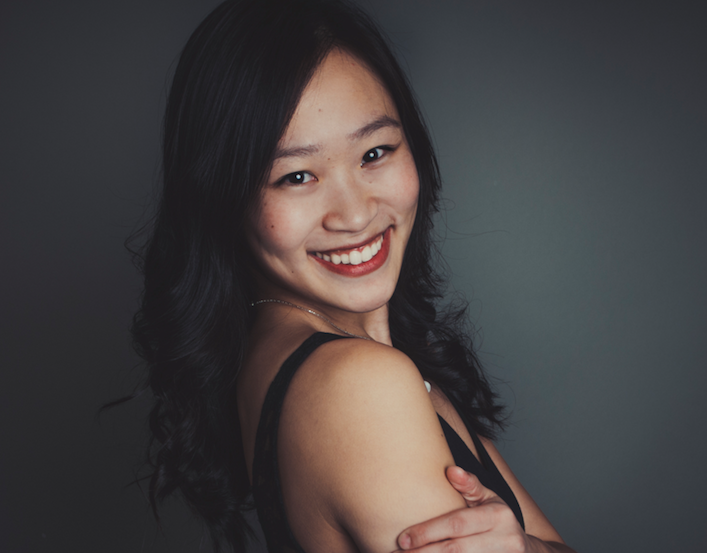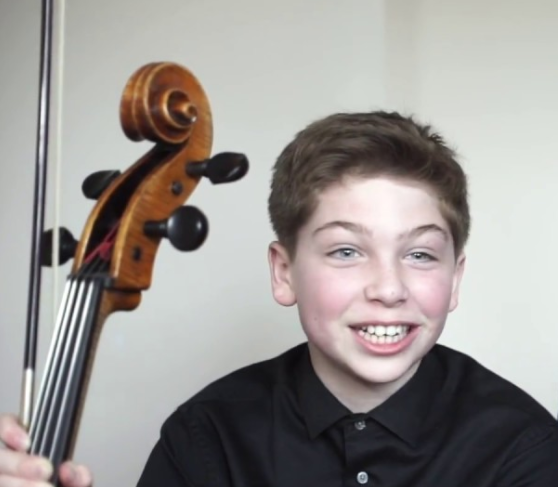Distinguished Concerts Orchestra, Distinguished Concerts Singers International, James M. Meaders, DCINY Conductor
Ola Gjeilo, Composer-in-residence and Piano
Miran Vaupotić, Guest Conductor
Meredith Lustig, Soprano
Jessica Grigg, Alto
Stern Auditorium, Carnegie Hall, New York, NY
April 15, 2018
Once again Distinguished Concerts International New York (DCINY) demonstrated the power of music on a massive scale in their recent concert at Carnegie Hall. It was another extravaganza.
Behind it all, of course, is a mission of encouraging music far and wide through performance and education, and in tribute to one who devoted decades to this mission, James M. Meaders, DCINY Conductor, presented the DCINY Educator Laureate Award to conductor, arranger, author, and educator, Dr. Milburn Price at the program’s opening. It set a tone of reverence to start off the evening.
For the music itself, Norwegian Ola Gjeilo and American Dan Forrest were the two featured composers whose major works were presented, alongside shorter works by Michael J. Evans, Joseph Deems Taylor, Dwight Beckham, and Matej Meštrović. Mr. Gjeilo and Mr. Forrest share some remarkable similarities in some ways. Both happen to have been born in 1978, and both write music that employs rather conservative tonality in exploring spiritual themes. Both are part of a growing wave of choral music that often hearkens back to days of chant, while freely tapping into multicultural or folk material, the simple harmonies and spare textures of New Age music, and some cinematic orchestral elements. Both composers are, perhaps needless to say, immensely popular.
Whatever one’s musical style preferences might be, it is hard not to admire the passion with which several hundred choir members on Sunday embraced both composer’s works. The Distinguished Concerts Singers International, the core group, along with the Distinguished Concerts Orchestra, set the stage for committed performances by choruses from the states of California, Florida, Georgia Kentucky, Louisiana, Minnesota, Mississippi, Oregon South Carolina, Texas, and Washington, as well as Australia, Canada, the UK, New Zealand, and (as DCINY’s printed material states) “individuals from around the globe.” Wow!
Mr. Gjeilo, known as the composer-in-residence with the well-loved group, Voces8 (heard on Decca with the choir, Tenebrae), has composed for other notable groups as well, such as the Phoenix Chorale, whose bestselling Northern Lights collection on Chandos was named iTunes Best Classical Vocal Album of 2012. Mr. Gjeilo has also released crossover piano albums Stone Rose and Piano Improvisations, parts of which this listener has heard and would characterize as “New Age.” As a disclaimer, New Age is not a style of which this listener is terribly fond in general, though, Mr. Gjeilo’s persuasive gifts make that stance difficult.
The first work we heard on Sunday was Mr. Ojeilo’s set of seven choral pieces called Dreamweaver, including movements, Prologue, Dreamsong, The Bridge, Intermezzo, Paradise, Dominion, and Epilogues. Mr. Ojeilo’s biography states that “his music often draws inspiration from movies and cinematic music” – and one could certainly hear that marked influence on Sunday. In the movement entitled Bridge, built largely on a rhythmically driving repeated bass note beneath surging crescendi, one could easily imagine a film hero engaged in desperate struggle, and indeed, the text of Dreamweaver features its own hero. It is based on the Norwegian medieval folk poem, Draumkvedet (with translated text by Charles Anthony Silvestri) in which its protagonist, after a thirteen-day sleep, recounts his dreams of “brave, beautiful, terrifying, and ultimately redeeming journey through the afterlife” (in the composer’s words).
The alternation of hymn-like calm and robust cinematic flourishes made for immediately gratifying dramatic episodes, even if occasionally one felt a yearning for the slower burn of a work by Beethoven or Brahms. Highlights were expressive solos from the string principals and some subtle chordal surprises in the opening movement Prologue.
Mr. Gjielo’s Song of the Universal followed, set to a text of Walt Whitman. Opening with a quiet choral hum, the music built to ecstatic peaks. The piano alternated between providing glassy rhythmic treble timbres and simply underscoring the basic harmonies. A personal reservation from this listener was that occasionally when the piano served merely to outline or double the harmonies, it detracted from, rather than adding to, the transcendent effect as a whole, lending things a more pedestrian feeling. Overall, though, Gjeilo’s pieces – and their performances – emerged as music that should engage this increasingly “attention deficit” world. Maestro James M. Meaders conducted with marvelous mastery and energy, as he did again later in the Dan Forrest work.
One would be remiss not to mention the superb soprano, Meredith Lustig, whose sound soared with great purity with and above the chorus. She also sang in the second half to grace the Forrest work, as did exceptional alto, Jessica Grigg.
Dan Forrest, whose Jubilate Deo closed the program, is known as the acclaimed composer of choral, orchestral, instrumental, and wind band works, which, through several publishers, have sold in the millions of copies and become firmly ensconced in the repertoires of musicians around the world. Mr. Forrest’s Requiem for the Living, given its New York premiere under the auspices of DCINY in 2014, was reviewed quite favorably in New York Concert Review here: DCINY Life and Liberty In Review.
Jubilate Deo is a remarkably potent work. Employing texts in Latin, Hebrew, Arabic, Mandarin, Zulu, and Spanish, it marks a growing trend towards a “globalized” choral style seen also in some of the music of Karl Jenkins, Christopher Tin, and others. The sheer numbers onstage were so large that, even in the hands of expert conductor Meaders, they threatened to encumber the tempo stability and ensemble; thankfully, however, they never quite did. With the steel resolve and training by so many choral directors from all over the world, these singers held their own in what was ultimately a triumph.
Especially moving was the second piece, a duet sung in Hebrew and Arabic simultaneously by Ms. Grigg and Ms. Lustig, intended to symbolize (in the words of the composer) “the unity between these cultures.” It was extremely stirring. Other highlights included the rousing Zulu movement, Ngokujabula!, which is so infectiously joyful that it will surely be a favorite with choruses as a standalone piece. This listener could not shake the tune for much of the day, despite inability to pronounce the word! Bravo to all!
Sandwiched between the Gjeilo and the Forrest was a string of shorter works for orchestra alone under the direction of excellent guest conductor Miran Vaupotić. The group started with Into the Woods by American composer Michael J. Evans (b. 1964), a musical celebration inspired by a Celtic fertility festival. It was played with exotic sensual relish.
Next came a work by American Joseph Deems Taylor (1885-1966), known more commonly as simply Deems Taylor and remembered today more for his music criticism and eponymous award in music criticism than for his compositions. Despite (or perhaps because of) his relative obscurity as a composer, it was a joy to hear a composition of his, a well-constructed, thoughtful movement of stately mood. Mr. Vaupotić is to be commended for looking outside of the more commonly played fare.
Also unknown to this listener was a work by American Dwight Beckham (b. 1931), entitled Memorial Ode. Based on the beautiful Ralph Vaughan Williams tune Sine Nomine, it is enhanced by timpani and snare drum rhythms yielded by the initials HR in International Morse Code (for the dedicatee Harold Romoser) – an intriguing compositional feature. It is a regal work and was given a fine performance.
Last of this set before intermission was a performance of Danube Rhapsody by Croatian Matej Meštrović (b. 1969), with the composer at the piano in two flashy concerto-type movements which brought to mind some of the festive crowd-pleasers of André Rieu or other crossover artists. It was clearly a joyous moment for the performers, particularly Mr. Meštrović, who took several selfies and blew kisses to the audience!
The evening was all in all quite a success. The audience appeared to love every minute. In this day of decrying empty seats in concert halls, DCINY apparently has their answer to that problem.


